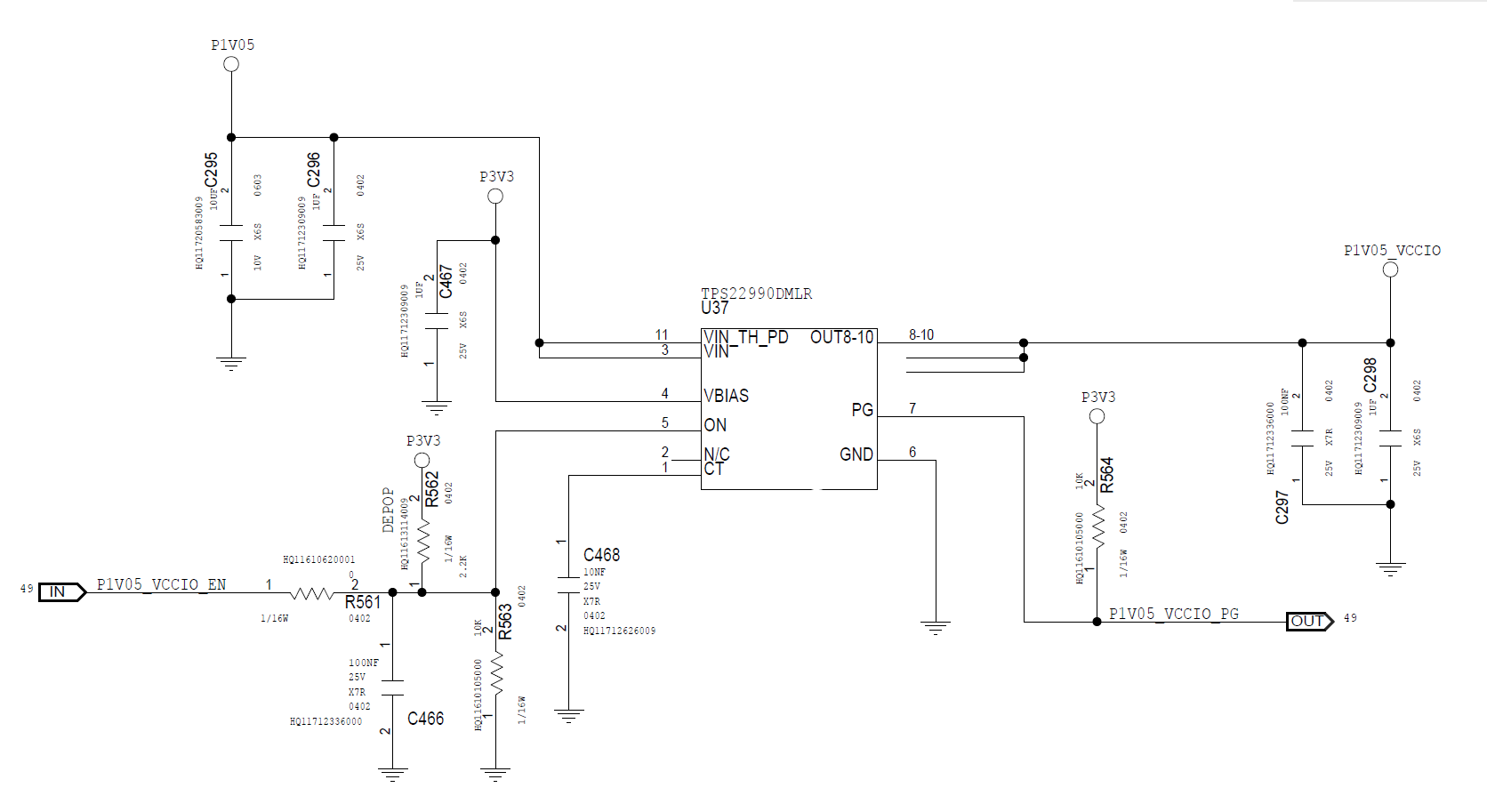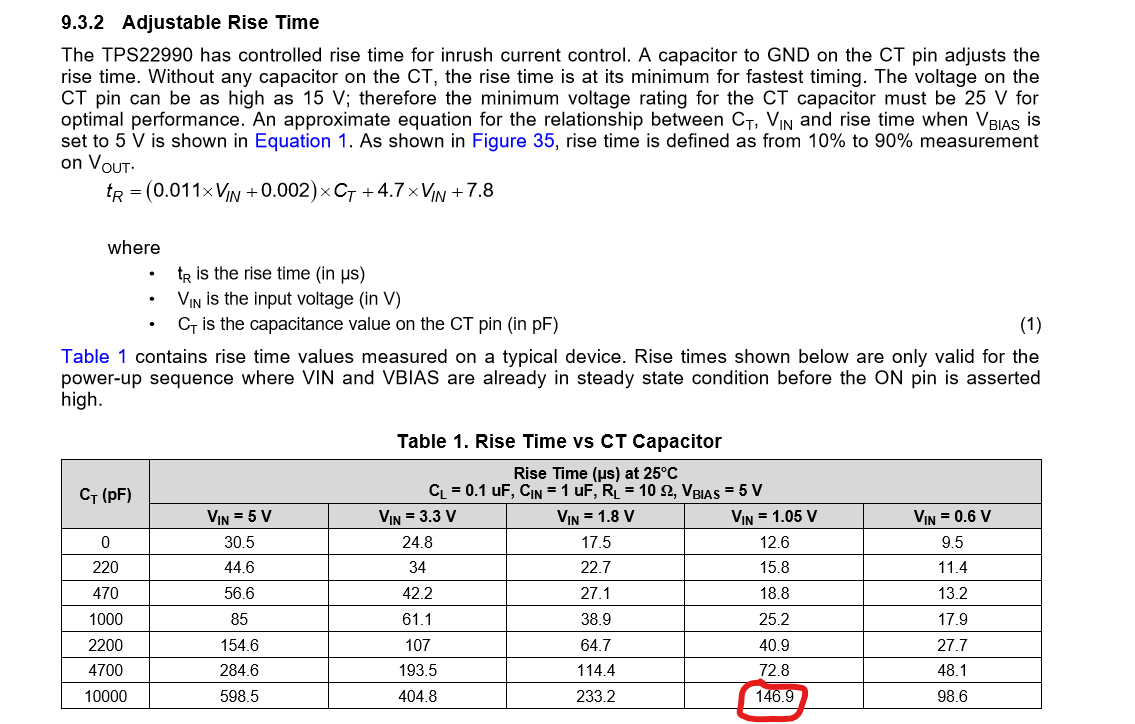Hi team,
Customer follows the datasheet to put Cin to Cout of 10:1 shown below.
However, there are about 600uF(SP_MLCC) at P1V05 side and about 200uF MLCC at the CPU side of P1V05_VCCIO.
Customer has concern about the Vin dip caused by inrush current during startup, so he set the Ct to 10nF.
Could you help to confirm if it is fine?
If not , could you give some advice to improve?
Thanks!
Best regards
Reagan



